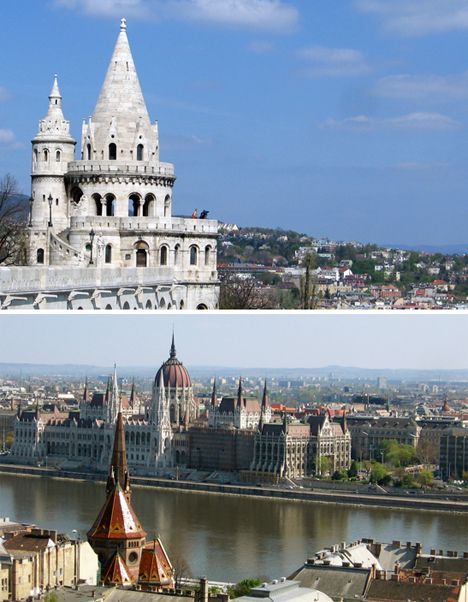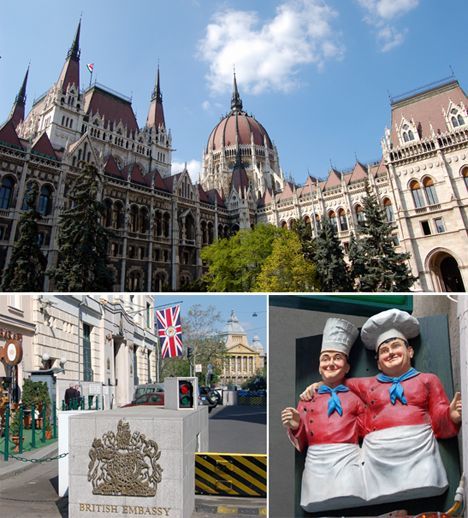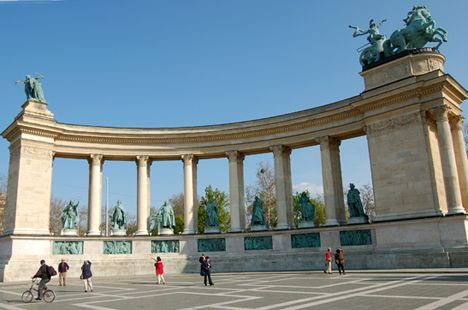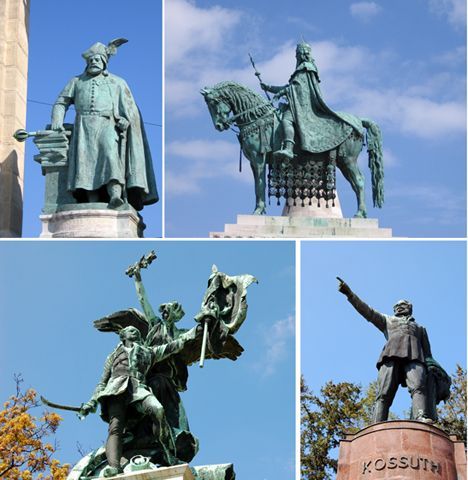Article
Budapest, A River Runs Through It
Author(s):
Budapest is a city split by the Danube River. Historic buildings in its UNESCO World Heritage Site castle district look down what is, arguably, the most interesting river in Europe.
Photography by the authors. The city is split by the Danube River, or rather its two parts are connected by the celebrated Szechenyi Chain Bridge that made history when it was completed in 1849. Buda, the smaller and older part, creeps up the slopes of the west bank. Historic buildings there in its UNESCO World Heritage Site castle district look down what is, arguably, the most interesting river in Europe. Buda was the Hungarian name for Bleda the Hun, brother of Attila. He died in 445 but his name lingers in what is essentially 17th Century Hungary.

Across the river from Buda’s historic buildings lies Pest, with its House of Parliament and a terrain stretching almost to the flat plains of the same Hungarian Puszta where Hungarians trained their famous horses for their historical wars.
Pest in the Slavic language means “oven.” Pest is larger due to its importance in the late 19th and early 20th centuries as a key component of the Austro-Hungarian Empire. Pest is easier to explore as the terrain is fairly flat.

It’s fun to explore and recognize Laurel and Hardy as the chefs in a popular restaurant, although a walk past the barriers at the British Embassy reminds visitors the risk of terrorism is taken seriously in Europe.
A stroll along Andrassy Avenue, the signature boulevard of Pest, leads ultimately to the major square in the city, Heroes’ Square and its tribute to figures in Hungarian history. The square is massive, reminding us the Austrian Hungarian Empire perfected size to impress long before Communist architecture took it to even greater excess.

Only a portion of the square is shown in this photograph. A camera would need an ultra wide-angle lens to do its size justice.
Like Vienna, Budapest is dominated by statues. Some, fortunately, are named to allow identification of the person portrayed.

A student with a backpack and a tripod is beside us taking photographs beside the Hungarian Parliament. Young people are useful to tourists who don’t speak the local language, because they often understand English. “Kossuth,” he tells us, “was the hero of the Hungarian 1848 War of Independence. The statue was begun before the Great War, but our communist so-called leaders had it knocked down and rebuilt in the '50s to show Lajos Kossuth pointing to a great future. Communists, ha!”
Statues are easier to photograph because they are, of course, stationary. Not so the attractions at the Lazar Equestrian Park, 20 miles from the city. The Lazar brothers, incredibly successful horse racers, established the park in 1991 and it has become a fascinating attraction for visitors to Budapest.

The grasslands and fertile fields of Hungary allowed the Magyar to become one of the greatest horse riders in European history. In war, enemies feared their cavalry. At the Equestrian Park riders demonstrate their remarkable control over the horse -- including getting their horses to lie flat and tolerate noises that might panic them while under fire in war.
One way to visit a city divided in two parts by a river that has highways along both banks is to rent a car and drive and park when you see anything interesting. An easier way is simply to sail the Danube on one of the many cruise lines that are embracing the fastest growing segment of the cruise industry -- river cruising. We were on our preferred cruise line sailing with our favorite ship captain, Jord Zwaal on Uniworld’s River Countess.
The Andersons, who live in San Diego, are the resident travel & cruise columnists for Physician's Money Digest. Nancy is a former nursing educator, Eric a retired MD. The one-time president of the New Hampshire Academy of Family Practice, Eric is the only physician in the American Society of Travel Writers. He has also written five books, the last called The Man Who Cried Orange: Stories from a Doctor's Life.




